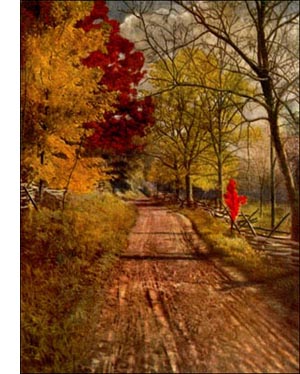White Cedar Tree
 White Cedar (Chamaecyparis thyoides, Britt.)-A fastgrowing, pyramidal tree, 40 to 8o feet high, with flat, graceful spray on erect, spreading branches. Bark pale, reddish brown, furrowed, stringy, often terminal. Wood light reddish brown, soft, light, weak, aromatic, close grained, easily worked, very durable in soil. Buds naked, very small. Leaves dull blue-green, minute, scalelike, opposite, 4-ranked, lateral pairs keeled, others concave, fitting compressed twigs. Flowers, April, monoecious, small, terminal, made of 4 to 6 scales; staminate red or yellow, abundant; pistillate few, greenish. Fruit woody, spherical cone, 4 inch in diameter, annual, glaucous, blue-green, becoming brown; scales with beak in centre; seeds winged, I to 2 under each scale. Preferred habitat, deep swamps near seacoast. Distribution, seaboard states, Maine to Mississippi. Uses: Important ornamental evergreen. Wood used for interior finish of houses, for boats, fence posts, railroad ties, buckets, barrels, shingles, and small woodenware.
White Cedar (Chamaecyparis thyoides, Britt.)-A fastgrowing, pyramidal tree, 40 to 8o feet high, with flat, graceful spray on erect, spreading branches. Bark pale, reddish brown, furrowed, stringy, often terminal. Wood light reddish brown, soft, light, weak, aromatic, close grained, easily worked, very durable in soil. Buds naked, very small. Leaves dull blue-green, minute, scalelike, opposite, 4-ranked, lateral pairs keeled, others concave, fitting compressed twigs. Flowers, April, monoecious, small, terminal, made of 4 to 6 scales; staminate red or yellow, abundant; pistillate few, greenish. Fruit woody, spherical cone, 4 inch in diameter, annual, glaucous, blue-green, becoming brown; scales with beak in centre; seeds winged, I to 2 under each scale. Preferred habitat, deep swamps near seacoast. Distribution, seaboard states, Maine to Mississippi. Uses: Important ornamental evergreen. Wood used for interior finish of houses, for boats, fence posts, railroad ties, buckets, barrels, shingles, and small woodenware.The Atlantic seaboard from. Massachusetts Bay south has a cypress whose common name, "white cedar," is unfortunate. There ought to be distinct names enough to go around. All the species of a genus ought to have the same generic name in English as well as in Latin or Greek. However, white cedar is the trade name of the lumber, and there is little chance that the cedar muddle will be cleared by calling this tree a cypress.
The tree is a lover of swamps and doesn't get far back from the coast. In cultivation it thrives in any sandy loam, if not too dry. It is lumbered to some extent and devoted to uses that test its durability in contact with water and exposure to sun and wind.